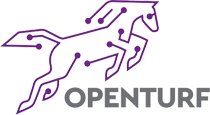Building a machine learning model is like building a powerful engine. But getting that model to perform reliably in a production environment, with real-time data and changing conditions, is like building and flying a rocket. It requires a different set of skills and an entirely new operations discipline. For years,...
The Rise of Retrieval-Augmented Generation (RAG): Bridging Creativity with Accuracy
Generative AI is powerful, but it has one big flaw: it often makes things up. Known as “hallucinations,” these inaccuracies limit trust when deploying AI in critical business scenarios. Retrieval-Augmented Generation (RAG) has emerged as the answer, combining the creativity of generative models with the reliability of real-time data retrieval....
The Ethics of Synthetic Data: A New Frontier for AI Training
The digital universe is expanding at an unimaginable pace, spewing forth petabytes of real-world data every second. Yet, paradoxically, for many cutting-edge AI applications, real data is often the biggest bottleneck. It's too sensitive, too scarce, too biased, or simply too expensive to acquire. Synthetic data – artificially generated data...
The Rise of AI-Powered Data Analytics
Every business today is swimming in data. Customer clicks, supply chain updates, IoT sensors, financial transactions—the volume is staggering. But here’s the real challenge: having more data doesn’t automatically mean having more insight. For years, traditional analytics tools have helped teams answer the basics—what happened last quarter, which region sold...
GPT-5 for Developers —
OpenAI’s newest API models (gpt-5, mini, nano) focus on stronger coding and agentic tool-use with clear migration notes.Read more: https://openai.com/index/introducing-gpt-5-for-developers/OpenAI Realtime API (gpt-realtime) GA launch adds better speech-to-speech, SIP calling, image inputs, and remote MCP servers for production voice agents.Read more: https://openai.com/index/introducing-gpt-realtime/OpenAI LLM Evaluation at Booking.com A practical playbook: strong-model...
The AI Polymath: Why the Future of AI Sees, Hears, and Codes All at Once
For the last few years, we've gotten used to magic. We type a question into a text box, and a well-written answer appears. We've conversed with AI, debated with it, and used it to write emails and software. But all this magic happened through a keyhole; we were interacting with...
Performance Engineering for Cloud Cost Optimization: Tuning for Efficiency, Not Just Speed
The cloud promised agility and infinite scale, and it delivered. But for many organizations, that promise has come with a hidden tax: a growing, often-uncontrolled mountain of cloud costs. The race to deploy applications has prioritized speed over efficiency, leaving a crucial discipline—performance engineering—on the sidelines. This isn't just a...
The DayOne Advantage: A Case Study in Seamless Employee Onboarding with TurfAI
Executive Summary DayOne, a smart accelerator powered by TurfAI platform, was developed to redefine the employee onboarding experience. The solution's objective was to convert complex, paperwork-heavy processes into a streamlined, AI-driven workflow. By automating document capture, data extraction, and IT provisioning, DayOne delivers a measurable transformation in onboarding, getting every...
OpenTelemetry’s Dominance: Standardizing Observability for a Cloud-Native World
The digital world has shifted. We've moved from monolithic applications to complex, distributed systems built on microservices, containers, and serverless functions. This new reality has made traditional monitoring tools feel like a relic of the past. Collecting logs, metrics, and traces from hundreds of services, often across multiple cloud providers,...
The AIOps Evolution: Predictive Analytics & Automated Remediation with GenAI
The digital world is more complex than ever. With cloud-native, microservices-based architectures, and a tsunami of telemetry data, IT operations teams are drowning. Traditional monitoring—relying on static dashboards and rule-based alerts—is no longer enough. The "alert fatigue" is real, and the time it takes to identify and fix issues (MTTR)...

